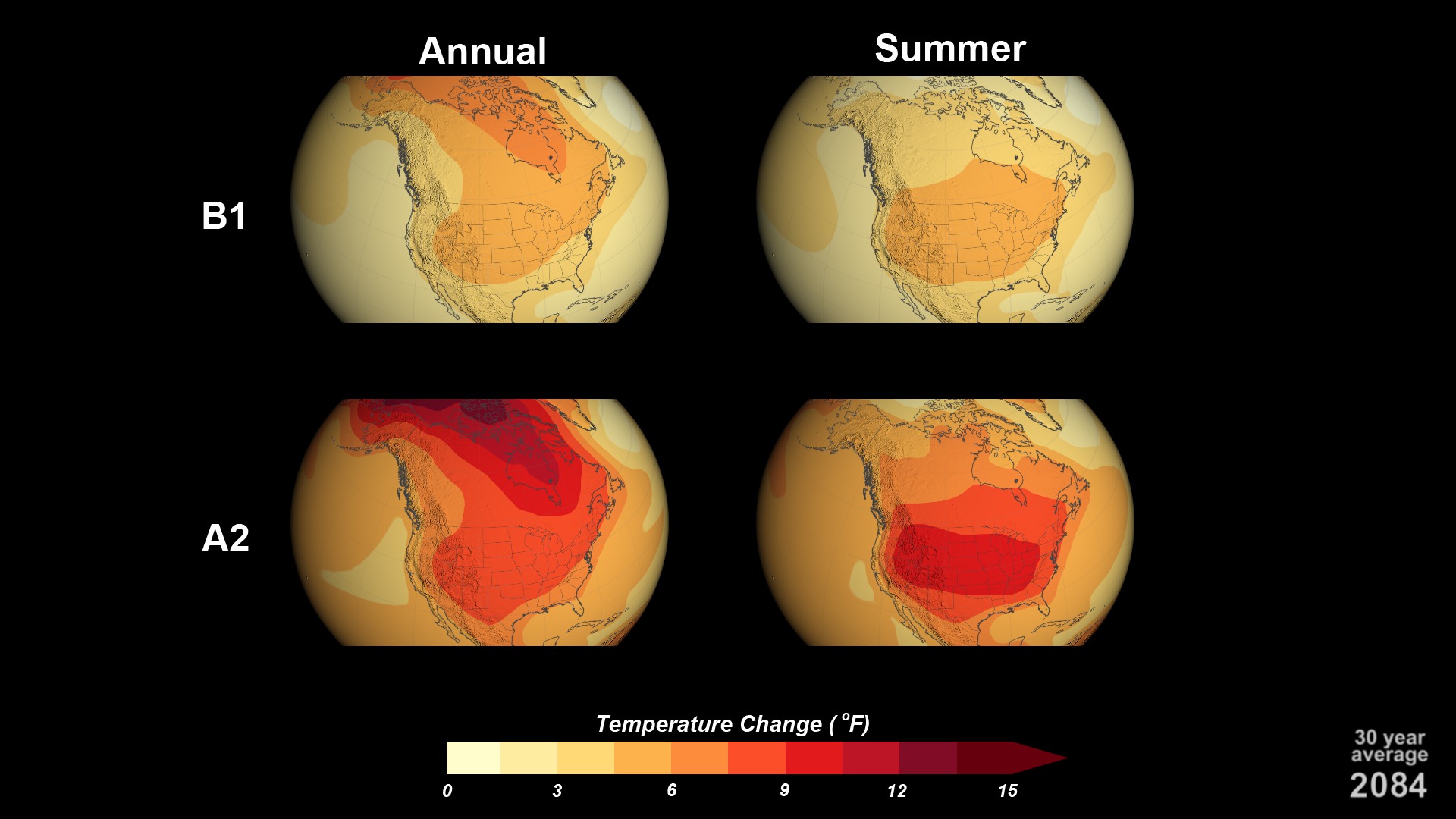Hot In Here
New climate research shows how the U.S. would experience warmer temperatures in the coming century as concentrations of the greenhouse gas carbon dioxide increase in the atmosphere. The research was conducted for the National Climate Assessment, an effort by the U.S. Global Change Research Program to study and prepare for climate change. In the first scenario, in which carbon dioxide emissions level off at about 550 parts per million (ppm) toward the end of the century, the average temperature of the continental U.S. would increase 4.5 degrees Fahrenheit by the year 2100. In the second scenario, in which carbon dioxide emissions rise to about 800 ppm (roughly double the 2013 level), temperatures would be, on average, 8 degrees Fahrenheit hotter than they were at the end of the 20th century. Watch the videos to see how each scenario give rise to warmer temperatures across the country.

Scientists project the temperatures of the future.
This video shows temperatures rise under the low-emissions scenario, where carbon dioxide concentrations increase to about 550 ppm by 2100.
This video shows temperatures rise under the high-emissions scenario, where carbon dioxide concentrations increase to about 800 ppm by 2100.

In the low-emissions scenario, a clear warming trend has developed over most of the continental U.S. by 2045.

In the high-emissions scenario, the average temperature across most of the U.S. has risen about 3°F by 2045.

By the end of the century, average temperatures have risen in both scenarios: 4.5°F (low-emissions, left) versus 8°F (high-emissions, right).
Credits
Please give credit for this item to:
NASA's Goddard Space Flight Center
-
Animator
- Greg Shirah (NASA/GSFC)
-
Producer
- Allison Leidner (USRA)
-
Scientists
- Kenneth Kunkel (NOAA/NCDC,CICS-NC)
- Brooke Stewart (NOAA/NCDC,CICS-NC)
- Laura Stevens (NOAA/NCDC, CICS-NC)
- Anne Waple (NOAA)
-
Project support
- Andrew Buddenburg (NOAA/NCDC,CICS-NC)
-
Writer
- Patrick Lynch (Wyle Information Systems)
Release date
This page was originally published on Tuesday, July 16, 2013.
This page was last updated on Wednesday, May 3, 2023 at 1:52 PM EDT.
